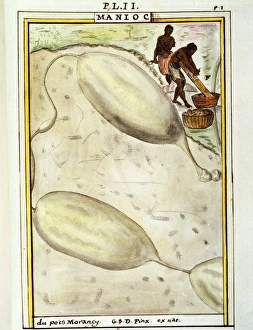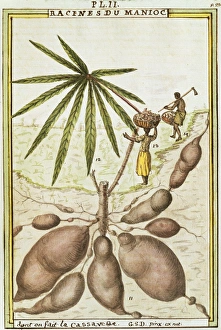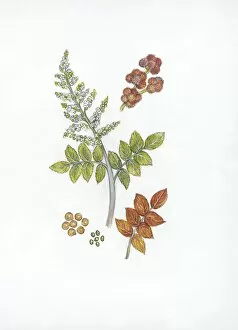Tropical Bush Collection (page 2)
Step into the enchanting world of the tropical bush, where vibrant flora and exotic plants captivate the senses
All Professionally Made to Order for Quick Shipping
Step into the enchanting world of the tropical bush, where vibrant flora and exotic plants captivate the senses. Delve into a realm filled with fascinating species such as the Melaleuca or Tea Tree Plant, depicted in exquisite detail in a Victorian Botanical Illustration. Marvel at its delicate beauty and discover its numerous medicinal properties. Transport yourself to 1789 through a watercolor by Delahaye, showcasing the Cassava or Manioc plant (Manihot esculenta). This versatile crop has been cultivated for centuries and continues to be an essential staple in many cultures worldwide. Explore further as you encounter the Purging Croton and Bromeliad, both captured elegantly in another Victorian Botanical Illustration. These unique specimens exemplify nature's ability to create stunning works of art while providing valuable ecological benefits. Witness Polyandria Monogynia come alive on yet another Victorian Botanical Illustration featuring Azara, commonly known as Toothed Azara. Its intricate floral structure is a testament to nature's ingenuity and diversity. Behold the majestic Tall Calotropis from an Apocynaceae family illustrated during the same era. Its grandeur is beautifully portrayed, inviting admiration for this remarkable plant that thrives even in harsh conditions. Immerse yourself once more in Polyandria Monogynia with Kennedya Marryattae showcased through Diadelphia Decandria Victorian Botanical Illustration. The captivating colors and intricate details of this flower will leave you mesmerized. Discover Gesneria Faucialis, also known as Wide-Mouthed Gesneria, depicted vividly within another botanical illustration from 1835. Its striking appearance showcases nature's artistic prowess while highlighting its uniqueness among other tropical plants. Marvel at Calotropis Procera's splendor through yet another Victorian Botanical Illustration from 1835 - witness how it stands tall amidst lush surroundings within the Apocynaceae family.






